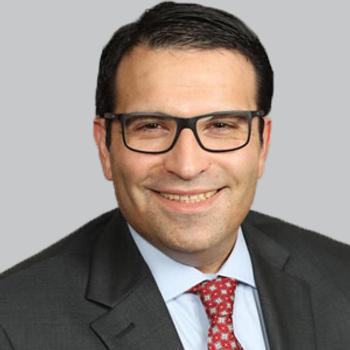
New Guidelines for Convulsive Status Epilepticus
Updated guidelines incorporate epilepsy drugs developed since the last protocol and include an evidence-based treatment algorithm.
The American Epilepsy Society has issued new guidelines and a new evidence-based treatment algorithm for managing early convulsive status epilepticus in children and adults. The guidelines were published in Epilepsy Currents.
The guidelines update and incorporate new drugs that have been developed since the previous 1993 treatment protocol by the Epilepsy Foundation of America.
“The goal of this current guideline is to provide evidence-based answers to efficacy, safety, and tolerability questions regarding the treatment of convulsive status epilepticus and to synthesize these answers into a treatment algorithm,” wrote first author Tracy Glauser, MD, of the University of Cinccinnati College of Medicine, Cincinnati, OH, and colleagues.
“We recognize that this guideline will need local scrutiny and adjustment in order to make it relevant to the social and economic environments in which it will be used,” they added.
Status epilepticus affects between 50,000 and 150,000 Americans annually. While mortality is less than 3% in children, it can range up to 30% in adults. Convulsive status epilepticus represents the most common form of status epilepticus. Appropriate and timely therapy can decrease the considerable morbidity and mortality that results from convulsive status epilepticus, according to background information in the article.
To develop the guidelines, the authors did a systematic literature review of randomized controlled trials (RCTs) published between January 1940 and September 2014, and evaluating therapy in seizures with a duration of at least five minutes. The review identified 38 RCTs and four meta-analyses. The recommendations also include three RCTs provided on request from pharmaceutical companies. The authors then rated these studies using modified criteria from the United States Agency for Health Care and Policy Research and the American Academy of Neurology scoring system.
Trials inconsistently included adults or children, and only three trials included both adults and children. Just four trials had class I level of evidence about efficacy.
The review found level A evidence for the following:
• Adults:
♦ Initial therapy: Intramuscular midazolam, intravenous (IV) lorazepam, IV diazepam and IV phenobarbital are efficacious.
♦ Adults without IV access: Intramuscular midazolam is more effective than IV lorazepam.
♦ Second therapy is less effective than initial therapy, and third therapy is considerably less effective.
♦ Respiratory and cardiac symptoms are the most common treatment emergent adverse events associated with IV anticonvulsants.
• Children:
♦ Initial therapy: IV lorazepam and IV diazepam are efficacious.
♦ Note: Second therapy appears less effective and no data exists about the efficacy of third therapy (level C evidence).
• Both adults and children: No significant difference in effectiveness has been found for IV lorazepam compared to IV diazepam.
• Patients treated with benzodiazepines have a lower rate of respiratory depression than those treated with placebo, indicating that respiratory problems are important sequelae of untreated convulsive status epilepticus.
• If both are available, fosphenytoin is preferable to phenytoin (due to tolerability issues).
Based on the literature review, the authors developed a treatment algorithm. The algorithm is not age specific, and is intended to provide a “unified approach for patients older than neonates.”
Briefly, the algorithm covers:
• Stabilization phase (0-5 minutes of seizure duration)
♦ ABCDs, timing since seizure onset, vital signs, oxygenation, ECG monitoring, check blood glucose, attempt IV access for labs
• Initial therapy phase (5-20 minutes)
♦ Initial drug of choice is a benzodiazepine, particularly IM midazolam, IV lorazepam, or IV diazepam (level A evidence).
♦ Initial therapy should be given as an adequate single full dose and not separated into several smaller doses (level A).
♦ Only IV lorazepam and IV diazepam can be given twice as repeated full doses (level A).
♦ Because IV phenobarbital has a slower rate of administration, it can be used as an alternative initial therapy but is not a first-choice drug (level A).
♦ In pre-hospital settings or when first-line drugs are not available: rectal diazepam, intranasal midazolam, and buccal midazolam (level B).
• Second therapy phase (20-40 minutes)
♦ No evidence base exists for preferred second therapy.
♦ No clear evidence that fosphenytoin (level U), valproic acid (level B), and levetiracetam (level U) work better than any of the others.
♦ IV phenobarbital can be used as second-line if the above are not available.
• Third therapy phase (40-60 minutes)
♦ No clear evidence to guide therapy: second therapy is less effective than initial therapy, and third therapy is even less effective.
♦ Consider repeating second therapy or using anesthetic doses of thiopental, midazolam, pentobarbital or propofol, along with continuous EEG monitoring.
Take-home Points
• The American Epilepsy Society has issued new guidelines which update and incorporate new drugs that have been developed since the previous 1993 treatment protocol by the Epilepsy Foundation of America.
• The guidelines provide a new evidence-based treatment algorithm for managing early convulsive status epilepticus in children and adults.
• While level A evidence exists for initial therapy, no evidence base exists for preferred second therapy and no clear evidence exists to guide third therapy.
Reference: Glauser T, et al.
Newsletter
Keep your finger on the pulse of neurology—subscribe to NeurologyLive for expert interviews, new data, and breakthrough treatment updates.


































